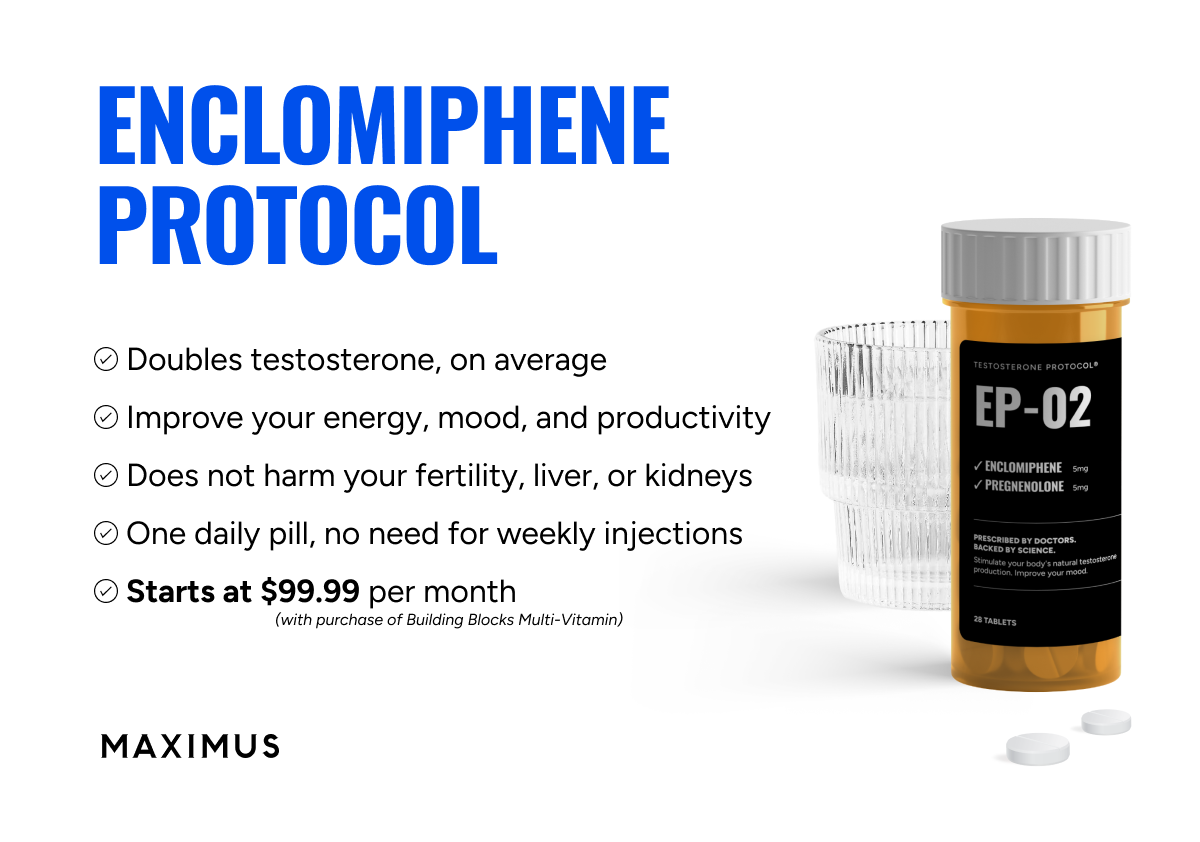It hinges on a question that maybe hasn't been answered yet: Does Sustanon behave the same as if its different esters were injected separately? Or is it more like a single unique ester with a half-life that is some average of the half-lives of its constituent esters? If the latter then daily injections probably lead to virtually unchanging daily testosterone levels, as would usually be the case with enanthate and cypionate. However, if the esters in Sustanon retain their differing absorption rates then a more substantial dairy variation would be possible. I recently came up with a guesstimate for un upper limit on this variation: +/-15% about the mean.I'm having a hard time figuring out how daily sustanon would provide different results than any other daily testosterone shot, after you've done it long enough that you're "saturated" with all the esters. My understanding of the test blends was basically that the different esters had different half lives, and you'd have those different esters "activating" at different times, so you had a more consistent level between injections spaced days apart. I just don't see how a daily blend is any better than daily enanthate or anything else after a month or so. What am I missing?
You are using an out of date browser. It may not display this or other websites correctly.
You should upgrade or use an alternative browser.
You should upgrade or use an alternative browser.
Daily Sustanon - The Best Results Yet
- Thread starter sebastian_r
- Start date
-
- Tags
- daily injections sustanon
I posted own thread for that.
I started sustanon with daily injections 20mg ED. What bothers me is I understood most likely it is not enough homogenous and with every 20mg there will be different ratio of the esters. I wonder how stable levels I can achieve like that
Do you guys think with every 20mg of the sustanon ampule the ratio of the esters is different?
I also heard rumors the decanoate part will have different half life in every injection. It is too long and the body cannot metabolize it at similar rate every time
Does Sustanon only come in ampules, or does it also come in 10ml vials?
madman
Super Moderator
It hinges on a question that maybe hasn't been answered yet: Does Sustanon behave the same as if its different esters were injected separately? Or is it more like a single unique ester with a half-life that is some average of the half-lives of its constituent esters? If the latter then daily injections probably lead to virtually unchanging daily testosterone levels, as would usually be the case with enanthate and cypionate. However, if the esters in Sustanon retain their differing absorption rates then a more substantial dairy variation would be possible. I recently came up with a guesstimate for un upper limit on this variation: +/-15% about the mean.
Does Sustanon behave the same as if its different esters were injected separately?
It does as it was designed to provide a fast yet extended release of testosterone due to the esters used as 2 are short acting (propionate and phenylpropionate) which are responsible for the short lived peak, 1 is medium acting (isocaproate) and 1 is long acting (decanoate) which are both responsible for the extended release/duration of action.
Keep in mind Sustanon 250 was designed to offer a therapeutic advantage over existing single esters of testosterone such as enanthate or cypionate which need to be injected more frequently.
Top it off with the fact that it was meant to be injected at the full 250 mg/ml dose roughly every 3 weeks when treating androgen insufficiency......and as we know this would be a horrible protocol.....let alone injection frequency.
According to the manufacturer/package insert:
4.2 Dose and method of administration
In general, the dose should be adjusted according to the response of the individual patient.
Dose Adults (incl. elderly):
Usually, one injection of 1 ml per three weeks is adequate.
Paediatric population: Safety and efficacy in children and adolescents, have not yet been established. Pre-pubertal children treated with SUSTANON should be treated with caution (see Warnings and Precautions). SUSTANON contains benzyl alcohol and is contraindicated in children under 3 years of age.
Method of administration
SUSTANON should be administered by deep intramuscular injection
Sustanon 250 is designed to provide a rapid peak in testosterone levels (24-48 hours after injection), and maintain physiological concentrations for approximately 21 days. Each 250 mg ampule provides 176 mg of testosterone.
As you can see from the graph below:
Testosterone concentrations obtained from patients while on intramuscular injection are shown in Fig. 3. The peak concentration obtained ranged from 42-121 nmol/l (mean 71 nmol/l) and occurred 24-48 h after the injection. The mean concentration fell to within the normal male range after one week and fell to the lower limit of the normal male range after 21 days. The overall mean T level was 27.7 nmol/l.
You can see 7 days following a 250 mg/ml injection T levels are in the normal male range and by day 21 are at the lower limit of the normal male range.
However, if the esters in Sustanon retain their differing absorption rates then a more substantial dairy variation would be possible. I recently came up with a guesstimate for un upper limit on this variation: +/-15% about the mean.
They do retain their individual absorption rates.....mind you it has been shown that injections using mixed testosterone esters such as Testoviron, Sustanon increases the initial testosterone peak compared to a single ester and also produces a much wider fluctuation of serum T levels compared to a single ester after multiple dose injections..... (Testoviron Depot 100 (110 mg testosterone enanthate and 25 mg testosterone propionate = 100 mg unesterified testosterone) every 10 d and 139 mg testosterone enanthate (= 100 mg unesterified testosterone) every 10 d.
11.3.4 Testosterone ester combinations
Testosterone ester mixtures have been widely used for substitution therapy of male hypogonadism (e.g. Testoviron Depot 50: 20 mg testosterone propionate and 55 mg testosterone enanthate; Testoviron Depot 100: 25 mg testosterone propionate and 110 mg testosterone enanthate; Sustanon 250: 30 mg testosterone propionate, 60 mg testosterone phenylpropionate, 60 mg testosterone isocaproate and 100 mg testosterone decanoate). These combinations are used following the postulate that the so-called short-acting testosterone ester (e.g testosterone propionate) is the effective testosterone for substitution during the first days of treatment and the so-called long-acting testosterone (e.g. testosterone enanthate) warrants effective substitution for the end of injection interval. However, this assumption is not supported by the pharmacokinetic parameters of the single testosterone esters. Both testosterone propionate and testosterone enanthate cause highest testosterone serum concentrations shortly after injection (Fig. 11.2 and Fig. 11.4). Accordingly, addition of testosterone propionate to testosterone enanthate only increases the initial undesired testosterone peak and worsens the pharmacokinetic profile that ideally should follow zero-order kinetics (Fig. 11.7). The computer simulation agrees well with the limited published single dose testosterone values that have been measured in hypogonadal patients treated with the combination of testosterone propionate and testosterone enanthate. Maximal increases of approximately 40 nmol/L testosterone over basal values are described one day after intramuscular administration of a testosterone ester combination of 115.7 mg testosterone enanthate and 20 mg testosterone propionate to three hypogonadal patients (Fukutani et al. 1974).
A comparison of computer-simulated testosterone serum concentrations after multiple dose injections of Testoviron Depot 100 (110 mg testosterone enanthate and 25 mg testosterone propionate = 100 mg unesterified testosterone) every 10 d and 139 mg testosterone enanthate (= 100 mg unesterified testosterone) every 10 d is shown in Fig. 11.8. As can be expected by the single dose kinetics of the individual esters, injection of the testosterone ester mixture (upper panel) produces a much wider fluctuation of testosterone serum concentrations relative to injection of testosterone enanthate alone (lower panel). This simulation shows that the injections of testosterone enanthate alone produce a more favourable pharmacokinetic profile in comparison to injections of testosterone propionate and testosterone enanthate ester mixtures in comparable doses. For treatment of male hypogonadism there is no advantage in combining short- and long-acting testosterone esters.
Keep in mind this is based off computer simulation using single dose injection and multiple dose injections (every 10 days)
As we know injecting more frequently will result in achieving more stable blood levels.
Now regarding daily injections using a mixed ester such as Sustanon 250 which contains 4 different esters of T.....there should be some daily variation but to what degree as we need to keep in mind what dose of T from each individual ester is being injected daily.....as an example when using the most commonly prescribed 250 mg/ml strength the overall dose contains:
2. QUALITATIVE AND QUANTITATIVE COMPOSITION
Name and strength of the active substances -
testosterone proprionate 30mg
testosterone phenylpropionate 60mg
testosterone isocaproate 60mg
testosterone decanoate 100mg
All four compounds are esters of the natural hormone testosterone. The total amount of testosterone per 1 mL is 176mg.
So the 250 mg of esterified T in Sustanon = 176 mg active T
Now say one is injecting 20 mg of Sustanon 250 daily than one would be injecting a measly 2.4 mg propionate along with 4.8 mg of phenylpropionate, 4.8 mg isocaproate and 8 mg decanoate.
Overall you would be injecting 7.2 mg of the shorter acting esters and 12.8 mg of the medium/long acting esters.
Now going back to the original poster of this thread he is only injecting 10 mg daily which would result in an extremely low dose of propionate 1.2 mg along with a measly 2.4 mg of phenylpropionate, 2.4 mg isocaproate and 4 mg decanoate.
Overall he would be injecting 3.6 mg of the shorter acting esters and 6.4mg of the medium/long acting esters.
Appassionato
Active Member
Now say one is injecting 20 mg of Sustanon 250 daily than one would be injecting a measly 2.4 mg propionate along with 4.8 mg of phenylpropionate, 4.8 mg isocaproate and 8 mg decanoate.
Overall you would be injecting 7.2 mg of the shorter acting esters and 12.8 mg of the medium/long acting esters.
Now going back to the original poster of this thread he is only injecting 10 mg daily which would result in an extremely low dose of propionate 1.2 mg along with a measly 2.4 mg of phenylpropionate, 2.4 mg isocaproate and 4 mg decanoate.
Overall he would be injecting 3.6 mg of the shorter acting esters and 6.4mg of the medium/long acting esters.
The proportions are still the same, at whatever dose you inject.
What's your conclusion then?
madman
Super Moderator
The proportions are still the same, at whatever dose you inject.
What's your conclusion then?
I am doubting that one would notice a huge benefit from the propionate ester when injecting such low doses of sustanon daily.
Appassionato
Active Member
It seems that it worked better for him compared to the single esters, so something must be doing the trick.
Unless it's a placebo effect, but that would have faded away by now.
Unless it's a placebo effect, but that would have faded away by now.
I would tend to agree, though after experimenting with various combinations of enanthate and propionate I think it's possible there are subtle benefits to even modest daily variation. Still, it's hard to know without a controlled trial.I am doubting that one would notice a huge benefit from the propionate ester when injecting such low doses of sustanon daily.
Regarding the pharmacokinetics of Sustanon, I would need to examine the study you cited above more closely to be sure, but I suspect they don't have the time resolution necessary to tell what's happening with daily injections of relatively small amounts. I'm also still questioning the assumption that a mixed-ester injection has the same absorption characteristics as separate, simultaneous injections of the esters. For the mixture this requires all of the shorter ester molecules to be exposed to the absorption layer of the depot, with no "shielding" provided by the longer esters. I guess it's possible that the shielding effect exists but its time-constant is too small to matter. It would be nice to get a more definitive answer to this.
sebastian_r
Member
There is plenty of anecdotal evidence that different ester show different level of E2 and DHT conversion. With that people experience different side effects.
I experience that for myself, I get different side effects for different ester with the same dosing & injection protocol.
And that's that, anecdotal evidence. No scientific explanation.
But I couldn't care less about TRT "science", I'm just testing and going with what works for me.
Here are some citations, but I have never checked them out, as I don't care.
Test is not Test: Steroids Forum: Steroids QA/Anabolic Steroids/TEST IS NOT TEST!! (prop vs E vs C etc ) Broscience debunked
The mix of ester from sustanon seems to provide me a more favourable balance of E2 and DHT. More favourable peak plasma level and so on....
E.g. with long esters I get very strong E2 conversion, too much. Peak probably not high enough.
With propionate / no ester I get very strong DHT conversion, too much. Peak probably too high.
A mix of it seems to balance it out. I could not get that with a single ester. Maybe with AI or adding some form of DHT or adding in DHEA for more E2 but I don't want to do that.
If I don't do daily shots with Sustanon I feel different (not close as good). It seems I need the daily prop, even if it's only a small amount. Or maybe I need the daily peak. Who knows.
I experience that for myself, I get different side effects for different ester with the same dosing & injection protocol.
And that's that, anecdotal evidence. No scientific explanation.
But I couldn't care less about TRT "science", I'm just testing and going with what works for me.
Here are some citations, but I have never checked them out, as I don't care.
Test is not Test: Steroids Forum: Steroids QA/Anabolic Steroids/TEST IS NOT TEST!! (prop vs E vs C etc ) Broscience debunked
The mix of ester from sustanon seems to provide me a more favourable balance of E2 and DHT. More favourable peak plasma level and so on....
E.g. with long esters I get very strong E2 conversion, too much. Peak probably not high enough.
With propionate / no ester I get very strong DHT conversion, too much. Peak probably too high.
A mix of it seems to balance it out. I could not get that with a single ester. Maybe with AI or adding some form of DHT or adding in DHEA for more E2 but I don't want to do that.
If I don't do daily shots with Sustanon I feel different (not close as good). It seems I need the daily prop, even if it's only a small amount. Or maybe I need the daily peak. Who knows.
Last edited:
The anecdotes aren't necessarily inconsistent with the available scientific research. When they are based on non-trough measurements a great deal of variation is possible. The research generally supports the concept of identical average levels of hormones resulting when the same amounts of pure testosterone are delivered. However, in the case of conversion to E2 or DHT, the more you push into supraphysiological territory, the less efficient the conversion due to saturation of the respective enzymes. So if you are delivering a huge dose then a shorter ester creates less total E2 and DHT than the equivalent dose of a longer ester. None of this is applicable to small daily doses of Sustanon. It is going produce close to the same amount of E2 and DHT as equivalent doses of any other ester. Any subjective differences are due to varying hormone levels, not differing total amounts of metabolites. It's also possible that peak and trough hormone levels have influences that are relatively independent of average levels. It would be useful to have research exploring this further.There is plenty of anecdotal evidence that different ester show different level of E2 and DHT conversion. With that people experience different side effects.
I experience that for myself, I get different side effects for different ester with the same dosing & injection protocol.
And that's that, anecdotal evidence. No scientific explanation.
...
This guy would have more credibility if his references supported his statements. He says "So going back to the study (2) estradiol levels were much higher with the group using long esters despite identical doses of the drug. So in short, long esters cause a higher rise in estrogen." But if you go to the source and look at Figure 2 you find that testosterone undecanoate yields the lowest AOC for estradiol. This study also uses only five monkeys for each group, which is a relatively small N for decent statistics....
Here are some citations, but I have never checked them out, as I don't care.
Test is not Test: Steroids Forum: Steroids QA/Anabolic Steroids/TEST IS NOT TEST!! (prop vs E vs C etc ) Broscience debunked
...
sebastian_r
Member
From big pharma I have only seen the 250mg ampules. I use them and buy vials on Amazon that I sterilize with alcohol before using. There are some undergound labs with 10ml vials and "pharmagrade" Balkanpharma has 10ml vials as well.Does sustanon come in 10ml mutli-use vials?
Last edited:
sebastian_r
Member
Interesting, especially for peak levels I can see a huge variance between short and long ester. A single shot of 20mg non ester test gives me more acne than I ever get from lets say steady levels of test undecanoate. The shot of non ester probably peaks very high.The anecdotes aren't necessarily inconsistent with the available scientific research. When they are based on non-trough measurements a great deal of variation is possible. The research generally supports the concept of identical average levels of hormones resulting when the same amounts of pure testosterone are delivered. However, in the case of conversion to E2 or DHT, the more you push into supraphysiological territory, the less efficient the conversion due to saturation of the respective enzymes. So if you are delivering a huge dose then a shorter ester creates less total E2 and DHT than the equivalent dose of a longer ester. None of this is applicable to small daily doses of Sustanon. It is going produce close to the same amount of E2 and DHT as equivalent doses of any other ester. Any subjective differences are due to varying hormone levels, not differing total amounts of metabolites. It's also possible that peak and trough hormone levels have influences that are relatively independent of average levels. It would be useful to have research exploring this further.
Last edited:
For me, 20 mg pure testosterone would put my average total testosterone at about 2,300 ng/dL. But that's for a 24-hour period. If TNE peaks and falls to nothing in six hours then my peak could be over 18,000 ng/dL! The most I've tried is 4 mg per day. This calculation is saying I could have been getting a peak, albeit brief, of over 3,500 ng/dL. I guess this explains why I "feel" TNE injections, even when they are seemingly small.Interesting, especially for peak levels I can see have a huge variance between short and long ester. A single shot of 20mg non ester test gives me more acne than I ever get from lets say steady levels of test undecanoate. The shot of non ester probably peaks very high.
Appassionato
Active Member
From big pharma I have only seen the 250mg ampules. I use them and buy vials on Amazon that I sterilize with alcohol before using. There are some undergound labs with 10ml vials and "pharmagrade" Balkanpharma has 10ml vials as well.
Can I ask you where you sources yours?
I don't really trust stuff I saw online.
Don't bother getting vials you need to sterilize yourself; you can buy ones that are pre-sterilized. I've used texlabsupply on eBay and had no problems with normal oil-based drugs. With an ethyl oleate carrier I had to turn to www.medical-and-lab-supplies.com. They sell seemingly higher quality vials with teflon-coated stoppers. They're on sale at the moment so I may get some more. Ultra Spec Sterile 10ml-20mm Clear Sealed Glass Vials | Med Lab SupplyCan I ask you where you sources yours?
I don't really trust stuff I saw online.
Appassionato
Active Member
Don't bother getting vials you need to sterilize yourself; you can buy ones that are pre-sterilized. I've used texlabsupply on eBay and had no problems with normal oil-based drugs. With an ethyl oleate carrier I had to turn to www.medical-and-lab-supplies.com. They sell seemingly higher quality vials with teflon-coated stoppers. They're on sale at the moment so I may get some more. Ultra Spec Sterile 10ml-20mm Clear Sealed Glass Vials | Med Lab Supply
I meant Sustanon, not the vial sorry.
Now say one is injecting 20 mg of Sustanon 250 daily than one would be injecting a measly 2.4 mg propionate along with 4.8 mg of phenylpropionate, 4.8 mg isocaproate and 8 mg decanoate.
Are we sure with 20mg daily we inject the same quantities of the separate ester, or its possible the ratios vary significantly from day to day? There are anecdotal reports about how homogenous they are mixed
My assumption is that normal thermal agitation keeps the esters well distributed. If you ran a vial through a centrifuge then for a period you probably could get different concentrations at different levels of the vial.Are we sure with 20mg daily we inject the same quantities of the separate ester, or its possible the ratios vary significantly from day to day? There are anecdotal reports about how homogenous they are mixed
Similar threads
- Replies
- 1
- Views
- 736
- Replies
- 12
- Views
- 3K
Online statistics
- Members online
- 3
- Guests online
- 400
- Total visitors
- 403
Totals may include hidden visitors.
Latest posts
-
-
-
-
-
-
-
-
-
Struggling with bloodwork consistency. TRT bloodwork included.
- Latest: BeardedButcher55
-
-














